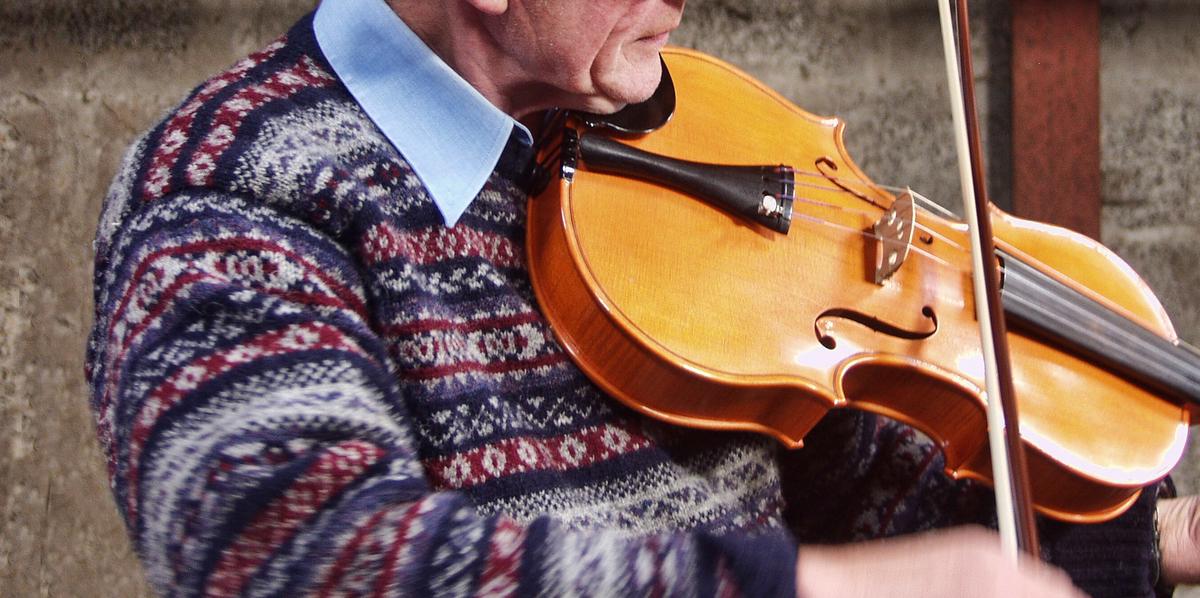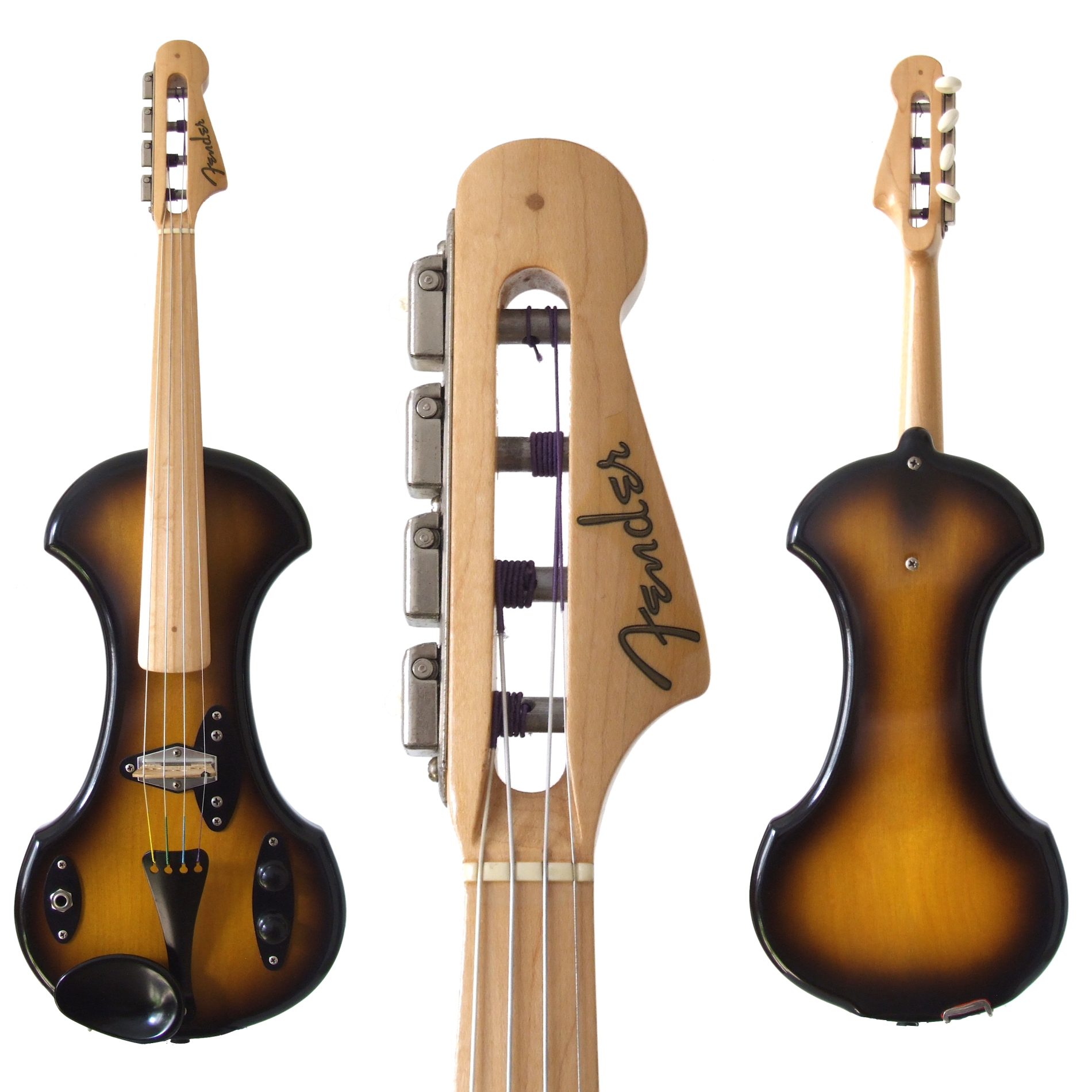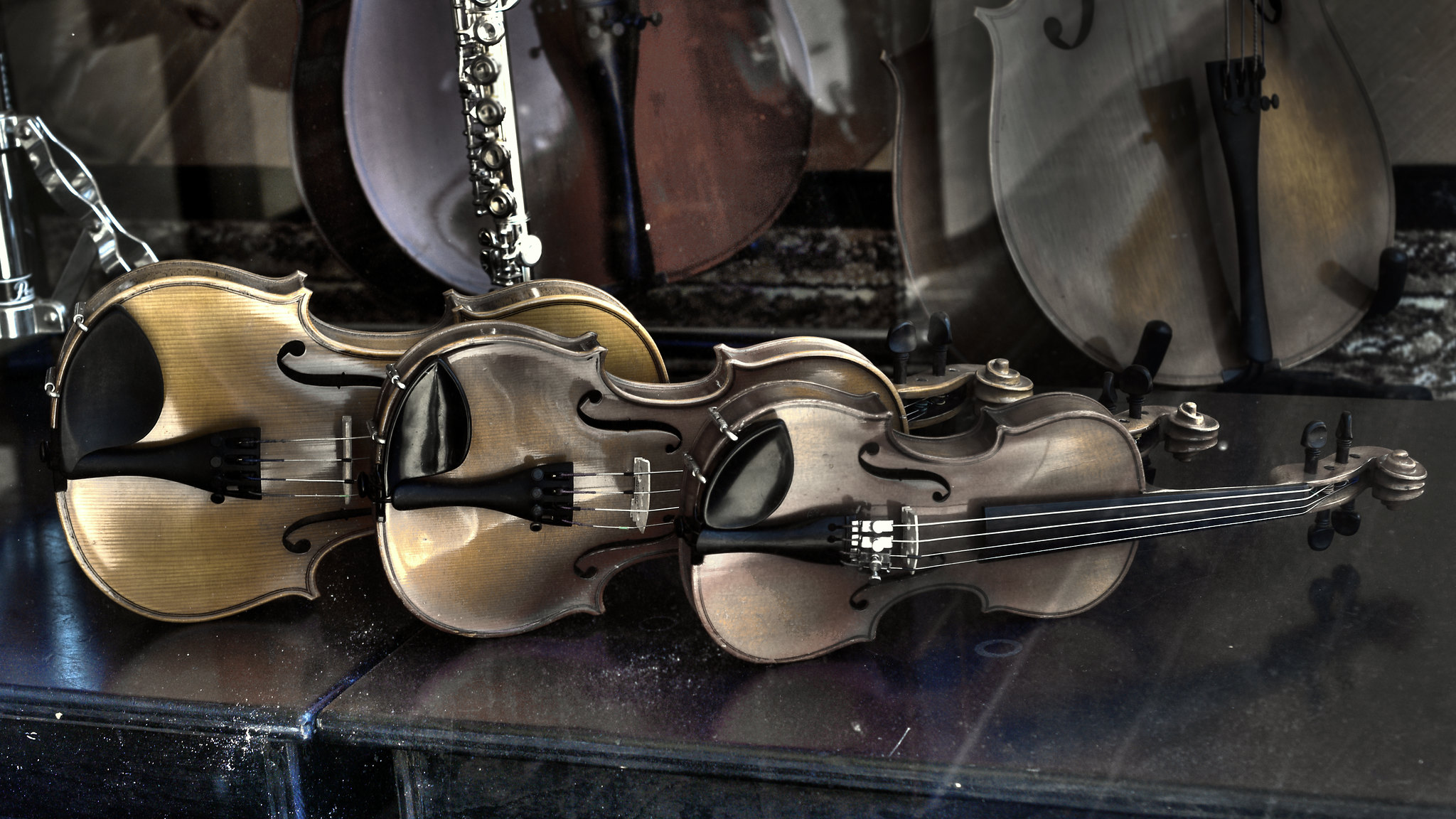Violins and Fiddles: Tell Me the Difference!
During the course of being a violin player, you will inevitably be asked (repeatedly): "Do you play The Devil Went Down to Georgia?" and "Where did you get that golden fiddle?" What they're actually asking you is, "Are you a fiddler, or are you a violinist?" The truth is, there are only a few little differences between a violin and a traditional fiddle, and typically, one can play fiddle tunes with a Stradivarius just as effectively as with a backwoods fiddle you found at Grandpa's house. But there are some differences, and we'll explore them and talk about what truly is the difference between a violin and a fiddle.
The Truth
Most people will tell you that the actual physical characteristics of a violin and a fiddle are totally the same. Both have a violin bridge, a violin shoulder rest, tune to the same 4 notes, use a violin chin rest, are bowed (a "fiddle bow" is the same thing as a violin's bow!) with the same style and quality of bow, and are generally used in either a bluegrass or black-tie affair interchangeably. So are a fiddle and a violin the same? Yes. And no.
What is a Fiddle?
Simply, a fiddle is a violin that is played in a certain style to achieve a tone and quality that the player desires. There are numerous types of fiddles worldwide, and we will cover those later on in the article. In the United States and Canada, the fiddle is synonymous with country music, bluegrass festivals, renaissance galas, and musicals. These instruments are likely violins that have had very minor modifications (and perhaps none at all!) to help their musicians reach notes that would otherwise be impossible or very difficult to achieve with traditional violin specifications.
For instance, some fiddlers choose to flatten the bridge of their instruments ever so slightly to be able to reach multiple strings at the same time. Where many classical violinists are able to play incredible chords, they are not executed at all the same way as fiddle music calls for, and thus, it's not possible to play fiddle music with a traditionally rounded bridge.
The other difference between fiddlers and classical violinists is the type of violin string they employ. Most classical violinists prefer a synthetic or gut core string instead of the more metallic and tinny-sounding steel strings. These brighter, more piercing sounding strings are attractive to fiddlers, and they are many times more preferred by the fiddle community.
Lastly, and maybe more rare, is the addition of a 5th string, the C below middle C. This of course lends to needing another peg (and peg hole), a bigger bridge, a larger instrument in general, and a fairly huge technical jump for someone who typically only plays with 4 strings.
Fiddle Music
Perhaps the biggest difference, and the reason that most people assume that there is a difference between a violin and fiddle, is the music itself. Fiddle music marches to the beat of its own drum: it doesn't follow classical music rules. Where classical musicians sit stiffly in chairs with bowties, fiddlers dance around on stage, free and much less stuffy than their cousins in Carnegie Hall.
Fiddle music varies greatly from area to area. The type of fiddle music you may hear in Ireland, for example, is hardly even comparable to the fiddle music you could hear in rural Texas, USA.
Fiddle lessons are much different than violin lessons, too. Where many budding violinists start with Twinkle Twinkle Little Star, fiddle students are trained in a completely different vein of music. In fact, where many beginning violinists go to a music camp, there is a fiddle camp in Maine, called Maine Fiddle Camp, that specializes in teaching young and old alike how to perfect their craft. What a blast!
Of course, both types of players should know how to read music, understand dynamics, follow a leader of a band, and be well-versed in how their instrument works, but the repertoire of fiddle music looks very unlike classically trained musicians.
Below are some of the best literature resources for beginning fiddlers as well as those who have been playing music for years.
In addition to these awesome resources, all students must learn how to produce excellent tone from their unique instrument. A teacher, both of classical technique and fiddling technique, can help you produce that coveted sound.
Famous Fiddle Tunes
It's true that the most famous pieces of music are not fiddle pieces, but classical. Mozart, after all, did not compose fiddle music: he composed operas and chamber music! It was only when the common folk took music and made it their own that fiddle music developed and became what we understand it to be today.
Sheet music for fiddle tunes can be purchased in books or collections, like the ones listed above, or depending on the individual, memorized to the point of not needing sheet music. Fiddle sheet music is sometimes loosely composed, allowing the musician to ad lib the music as he or she sees fit. It's vastly different from Mozart, who scripted every last gracenote. Fiddling allows the musician to "fiddle around" with the music, making it their own, joyfully and freely. In fact, this is likely where the term "fiddle around" came from!
Famous fiddle tunes are almost endless. Although this is hardly a comprehensive list, here are a few of the most famous fiddle tunes in the United States. Listen and be delighted!
Angeline the Baker:
Cherokee Shuffle:
Jenny Lind:
Fire on the Mountain, with a fantastic story behind the title!
Who could forget... Orange Blossom Special:
Other incredibly famous tunes from the United States include but are not limited to: Cotton-Eyed Joe, Tennessee Waltz, Mississippi Sawyer, Leather Britches, Woah Mule, Cumberland Gap, Cripple Creek, Sugar in the Gourd, Cackling Hen, Soldier's Joy among so many others.
Fiddling Around with Language: Expressions in English
The English language and English speakers love a good idiom. There are a lot of expressions involving fiddles!
The first one is when one describes a person as "fit as a fiddle," meaning to be of good health or be physically fit. This terms was coined in the 1600s in England, but its meaning was different than it is today. In the 1600s, it meant to be a "good fit" for something, such as a job.
The second one is to be labeled as "a second fiddle." Today, this means that you'd be in second place, or you'd be a runner up. Another term for this might be a "third wheel," or "unimportant." This phrase dates back to the 1800s and meant what it does today!
The third expression used regularly in English is "to be played like a fiddle." This is typically used when you have been duped or conned by someone, assuming that they just messed around with you (or your heart!) and then dropped you. Typically, this is understood to be a form of manipulation.
And lastly, "the cat and the fiddle" is part of the famous nursery rhyme "Hey Diddle Diddle" where the cat in question is playing a fiddle while a cow jumps over the moon.
World Music: Fiddles Worldwide
Fiddles are found the world over. The styles of music they play are vastly varied, but the instruments are constently stringed, often bowed or plucked, and typically are not formalized by the vast majority of players. Again, these instruments often were the result of the common people enjoying music individually or as a small group, not a formal orchestra or symphony!
Cigar Box Fiddle
Like the name implies, a cigar box fiddle is literally a fiddle made with a cigar box. Likely born from sheer resourcefulness, these fiddles are homemade, or made by a industrious artisan, and their tone varies greatly. The first time they were seen was in the United States Civil War-era. Check out this fantastic fiddler (and singer) who possibly made his own instrument and seems to eagerly show it off before playing it for us.
Horsehead Fiddle, or the Morin Khuur
The horsehead fiddle, or as it is known in Mongolia as the morin khuur, is a fascinating instrument. In Mongolia, it is seen as a symbol of the nation of Mongolia. Its history is rich and storied. It is a bowed, two-stringed instrument.
The origin of the morin khuur is ambiguous and full of Mongolian legend, but one thing is known: it is an ancient instrument and has been enjoyed by millenia of Mongolian people.
Festivals are held each year, and it is a celebrated and loved instrument throughout Mongolia. Specialized schools are attended by eager students who desire to become the next outstanding musician in their field.
Erhu or Chinese Fiddle
The Erhu is an ancient instrument, found predominantly in China and Chinese culture, that is vaguely similar to the morin khuur. Its origins date to the Tang Dynasty, in the first century AD.
Like its northern neighbor, the erhu is a two stringed instrument, played with a bow. The neck of the instrument extends over the shoulder, and it is a celebrated and revered instrument in China's culture.
Just like the morin khuur, it is a highly specialized instrument whose musicians are trained for years and respected in society. This instrument's history is incredibly rich and is worth learning about!
Interestingly enough, the erhu is found in popular music today, although it likely doesn't show up in a place of prominance typically. The Door, Nine Inch Nails, and The Beach Boys all used the erhu in their music! Famous soundtracks, such as Avatar, used the erhu as a dominant voice.
Bass fiddle, or double bass
The "bass fiddle," also known as the double bass, is often used in bluegrass and celtic music. The same rules apply to basses as they do to violins who masquerade as "fiddles." The music these bassists play is typically the only differentiating factor between a "bass fiddle" and a "double bass."
Check out Edgar Meyer show us how it's done on his double bass "fiddle."
Old Time Fiddle
This is a genre of music, not a type of fiddle. Among other tunes, these "old time fiddle tunes" are the famous songs: Coal Creek March, Sally Goodin', Spotted Pony, Turkey in the Straw, and Bonaparte's Retreat.
The list of Old Time Fiddlers is incredibly vast. Some of the most famous, however, are easily remembered names. Charlie Higgins, Al Cherny, and Tommy Jarrell were masters of their craft.
Irish Fiddle
The Irish Fiddle is just a violin, used to fiddle in an Irish style. Irish fiddling is a unique style, and one that needs to be honed over time. Vibrato is used much more sparcely, and the music tends to be played by ear rather than by notes or sheet music. The variations are incredibly diverse based on the fact that people took the music that they had learned by ear and tweaked it to their liking, passing it down from generation to generation. Naturally, the music is very unique to each district in Ireland.
Thankfully for those of us who would enjoy Irish fiddling but don't have a Irish grandparent, the tunes have been written down for us to learn.
Scottish Fiddle Music
Like above, the instrument does not change from the violin but only in the way it is played. Scottish style of fiddling is unique to itself, adopting influences from Norway, England, and Ireland.
Scottish fiddling is seen in Nova Scotia, Canada, and many parts of the United States. Different regions of Scotland have different styles of playing, too!
Highly sticattoed and with a heavy use of a technique called the "Scotch Snap," as well as a technique called a driven bow. Scottish fiddling draws on the bagpipes for some of its beautiful and unique sounds as well. Like Ireland's version of fiddling, extreme isolation and lack of sheet music for hundreds of years lead to fiddlers learning their craft by ear and changing the tunes to their liking.
In Conclusion
The violin and fiddle are the same instrument aside from very minor modifications. What is different is the style the instrument is played in, and what kind of music the musician chooses to enjoy!
There are instruments all over the world similar to the North American and European fiddle. Bowing strings to produce sound predates written history. Explore fiddling and world fiddles today!








